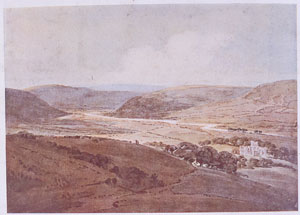 |
 |
 |
 |
 |
 |
 |
|
Kirkstall's monks after the Dissolution (3/5)
Surviving wills of former members of the community show that bonds amongst those who had shared the monastic life at Kirkstall outlasted the dissolution. In 1542 Thomas Bartlett bequeathed his best gown with silver clasp to the former monk, Thomas Ellis; he left his portion of a suit of vestments that had previously belonged to the Kirkstall monk, John Harrison, to Leeds parish church.(10) In 1550, Richard Ellis bequeathed his horse, his best gown, vestments and altar cloth to Anthony Jackson, the former bursar of Kirkstall.(11) Thomas Pepper, who was Jackson’s godson, bequeathed him a jacket of ‘caffa’ and the lease of land in Cookridge. Pepper’s will suggests that he maintained contact with at least three other former members of Kirkstall, for he left a camlet jacket to Leonard Wyndresse, a feather-bed, bolster and his best gown to William Lupton, and the lease of land in Cookridge to Richard Wood.(12) Edward Heptonstall’s (Pomfret) will of 1558 is of considerable interest and reveals that he brought with him – and safeguarded – the abbey’s library, and that even twenty years after the Dissolution he retained hopes of a restoration. Edward, at that time a priest of Leeds, bequeathed a vestment of silver and damask velvet as well as a book, the Sermones Disciplini, to the parish church at Leeds. To his nephew, who studied at school,(13) he left the books that had hitherto belonged to Kirkstall Abbey and now stood in a box at the end of his bed; he stipulated that if the abbey reconvened, his executors should return the books to their former home.(14) |
